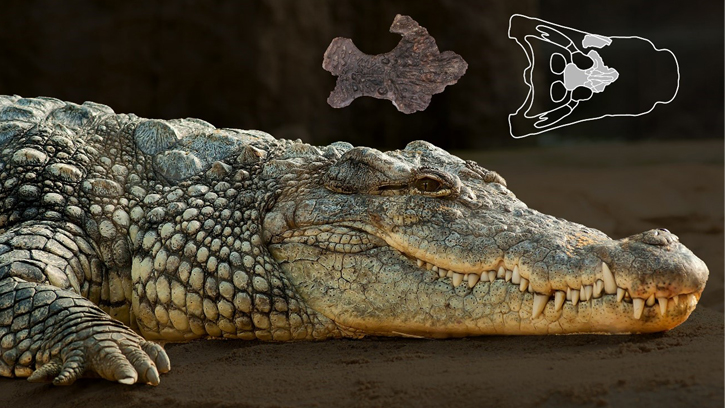When crocodiles roamed among the dinosaurs of the Pyrenees

A new study published in Historical Biology describes the remains of a crocodyliform found in the mid-20th century in Pallars Jussà (Catalonia, North-East Spain). This analysis reveals that this specimen, dating back around 70 million years, belonged to a different species from the ones already known from the nearby coeval deposits. The research provides new evidence of the diversity of vertebrate fauna —not only dinosaurs— in Europe during the Late Cretaceous, just before the mass extinction event 66 million years ago.
In the late 1950s, the site of Suterranya-Mina de Lignit located in the county of the Pallars Jussà, province of Lleida) was coal mine. At that time, Josep Montané worked at the mine, where he collected several fossils, including a fragment of a crocodile-like skull. The fossil remained unnoticed until 2023 when this specimen (which now is part of the collection of the Museu de la Conca Dellà in Isona) was finally studied by Riccardo Rocchi (University of Bologna) and Bernat Vila (Institut Català de Paleontologia Miquel Crusafont and Museu de la Conca Dellà).
After analyzing it, researchers determined that this skull fragment belonged to a specimen of the allodaposuchids family, a nowadays extinct group of crocodyliforms that were very abundant during the Late Cretaceous of Europe. Crocodyliforms comprise several groups of "crocodiles," including both present-day forms and their ancestors.
While a species of alodaposuchid (Allodaposuchus palustris) was already described in 2015 in nearby and contemporaneous deposits in Fumanya (Berguedà, in the Catalan Pre-Pyrenees), the specimen recently described in Suterranya-Mina de lignit does not seem to belong to this species. Instead, it shares more similarities with Allodaposuchus subjuniperus, a species known only from younger deposits in the Aragonese Pyrenees. In particular, the studied fossil and this species share some features of the region between the eye sockets. Based on an unpublished document that has now come to light, researchers have discovered that Josep Montané also found some teeth associated with the skull that were attributed to the species Allodaposuchus subjuniperus.
Despite all the similarities, the fragmentary nature of the remains does not allow to clearly refer it to Allodaposuchus subjuniperus. However, it can be firmly stated that they undoubtedly do not belong to the other known species, Allodaposuchus palustris.
This discovery opens to a scenario where at least two different species of allodaposuchids possibly coexisted in the same coastal ecosystem during the Late Cretaceous, reinforcing the interpretation that these areas represented a habitat with a notably rich biodiversity, including crocodyliforms, dinosaurs, turtles, fishes, plants, and many other organisms that formed a complex ecological network just a few million years before the great mass extinction that led to the disappearance of all non-avian dinosaurs and, with them, the end of the Mesozoic era.
The Suterranya-Mina de lignit site formed 70 million years ago in a brackish coastal environment, which was, part of the shorelines of the Ibero-Armorican island in the archipelago which corresponds to modern-day Europe. The paleoenvironment where these crocodiles lived was a lagoon near the sea, with a mixture of marine and continental waters, abundant vegetation, which later favored coal (lignite) production.
Institut Català de Paleontologia Miquel Crusafont (ICP-CERCA)
Universitat Autònoma de Barcelona
References
Rocchi, R., & Vila, B. (2024). New eusuchian cranial remains from the Upper Cretaceous of the southern Pyrenees. Historical Biology, 1–9. DOI: 1080/08912963.2024.2350551

